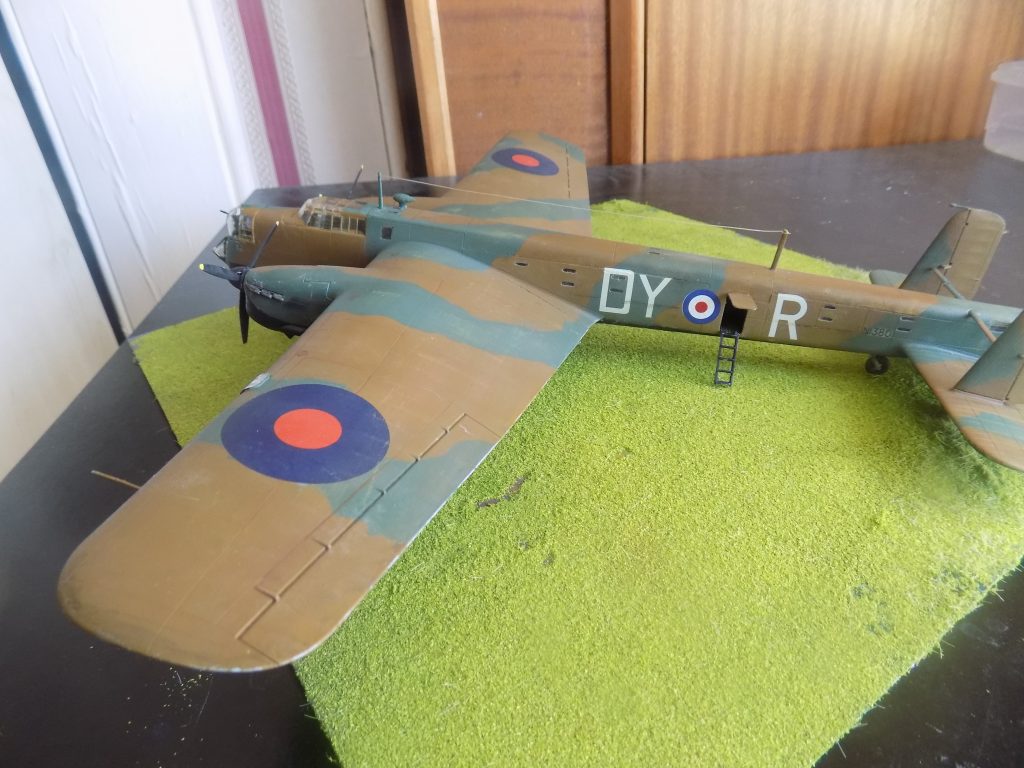
This is a new release by Airfix and overall a fine model with fine recessed panel lines. There were a few glitches, e.g. holes were missing for attaching parts D52 and C31. I messed up the varnishing process and as a result ruined the kit decals, which had silvered badly anyway. Luckily, I had some roundels and code letters in the spares box which worked better. There was the option to make the all-black night fighter version but I preferred the more colourful standard dark earth and dark earth with black underside version.
At the start of WW2 and before the introduction of the heavy bombers, the RAF had to make do with the stop-gap bombers, the four twin-engined Hampden, Blenheim, Whitley and Wellington, and worst of the bunch, the Fairey Battle. These aircraft constituted the backbone of Bomber Command well into 1942.
The Whitley V was powered by the excellent Rolls Royce Merlin and could cruise at 165mph with a 8,000-lb bomb load over short distances.
‘A vital part of Bomber Command until the introduction of the four engine heavy bombers, the Whitley took part in the first RAF bombing raid on German territory, and also performed many leaflet dropping sorties in the early days of the war (see below). Always intended for night time operations the Whitley was a slow machine with docile handling characteristics but with a ceiling of just 15,000 ft with a full bomb load it was still vulnerable. After its retirement from front line bombing duties many served with the RAF’s Coastal Command or as a glider tug and transport machine.’ (Airfix).
According to Max Hastings: ‘ The Whitley looked for all the world like a rather pedantic, middle-aged pipe-smoker, with its jutting chin mounting a single Vickers K gun and its extraordinary tail-high attitude in flight. On its debut in 1937, Flight magazine wrote: ‘The Whitley is as kind to its crew as it is likely to be unkind to any enemy down below’. Yet in reality the essential weakness of all Bomber Command’s early wartime aircraft was their mass of inadequate ancillary equipment prone to technical failure and their utter lack of basic comfort for crews compelled to live in them for ten hours at a stretch. Each aircraft carried a crew of five: two pilots; a navigator; a wireless operator, who usually spent much of the trip with his1155 set in pieces in front of him, or struggling to coax more power out of the Whitley’s generators; and a rear gunner, who nursed his four Brownings in a power-operated turret mounted between the twin booms of the tail’. (Max Hastings, ‘Bomber Command’, 1979).
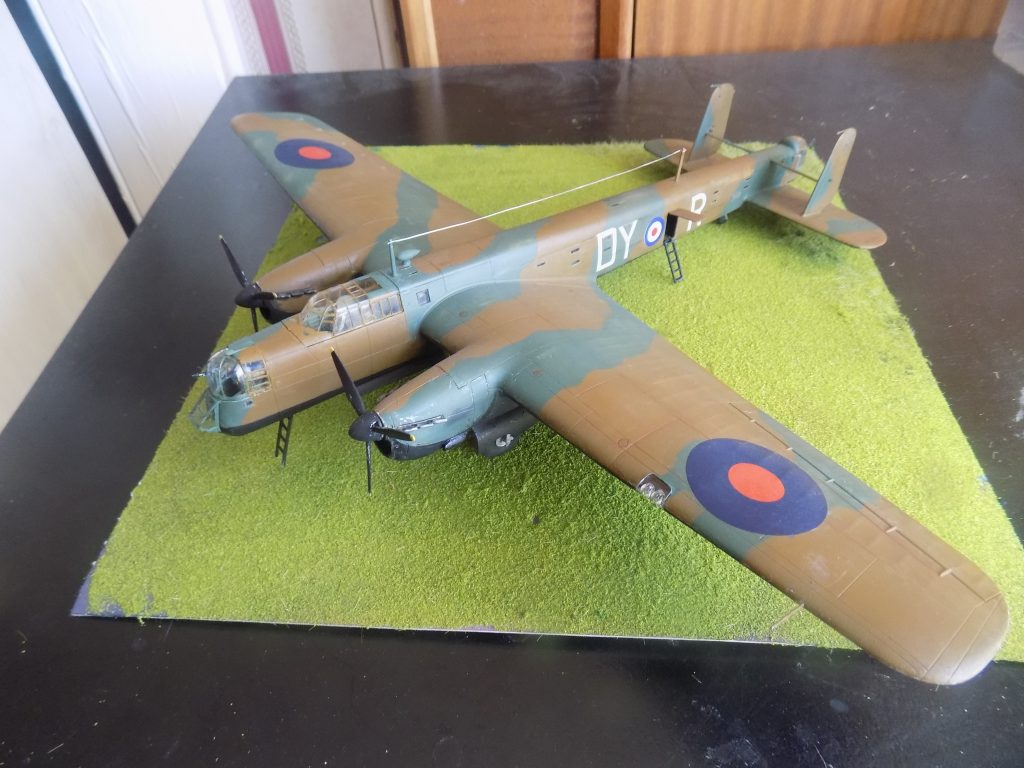
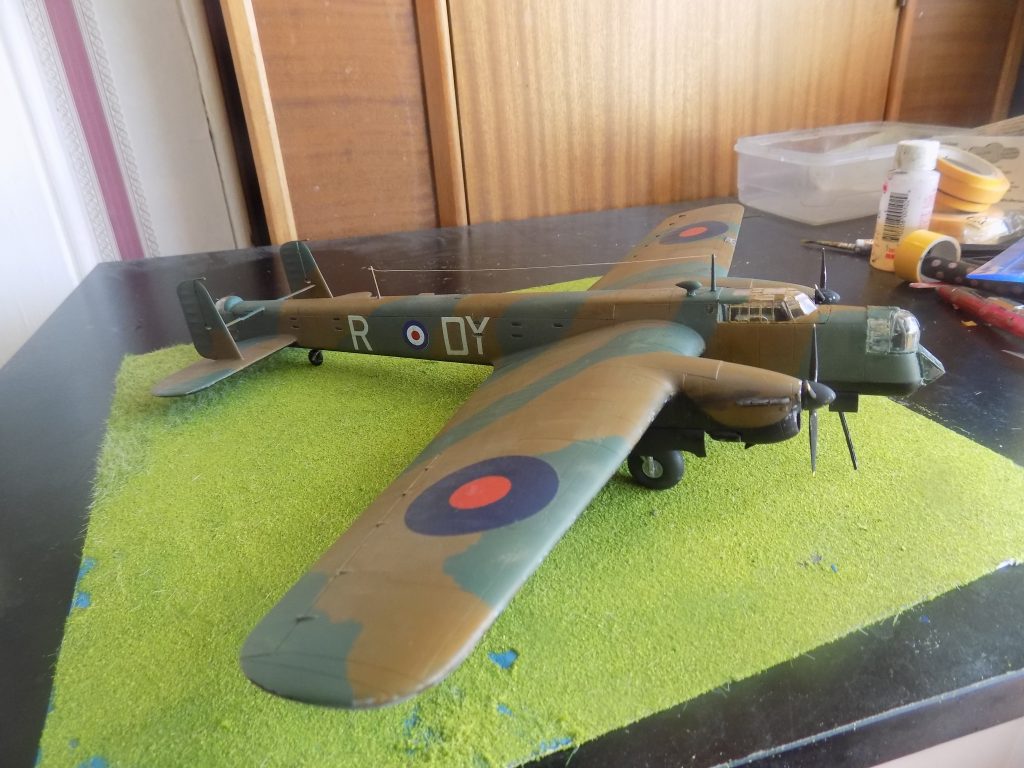
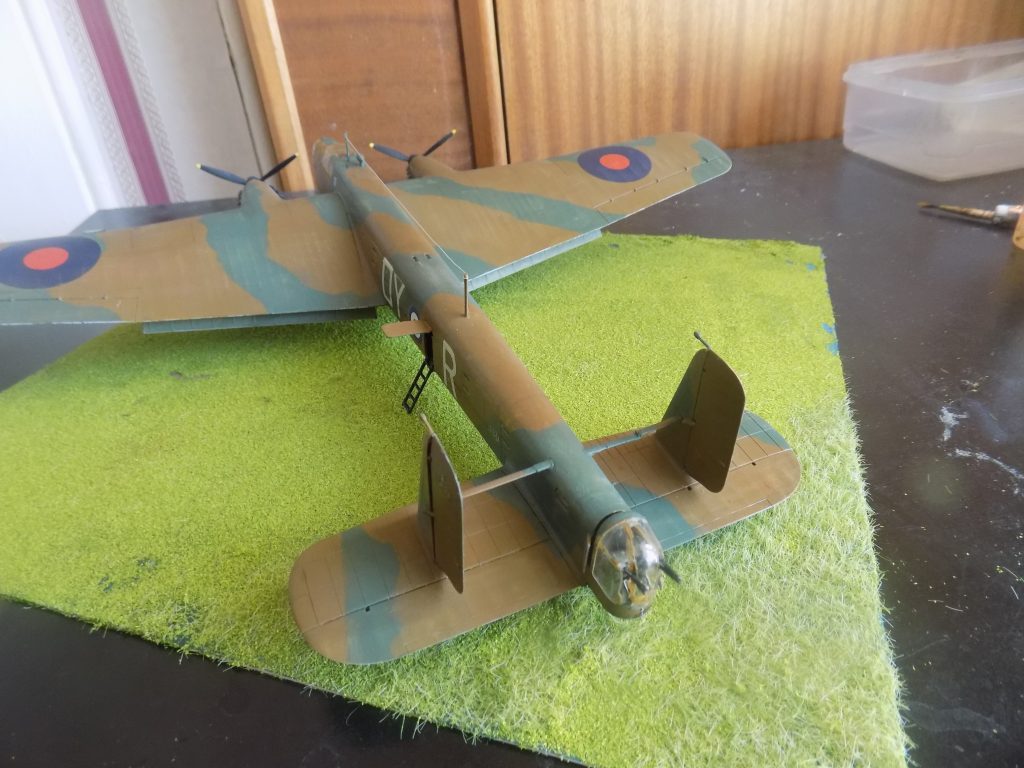

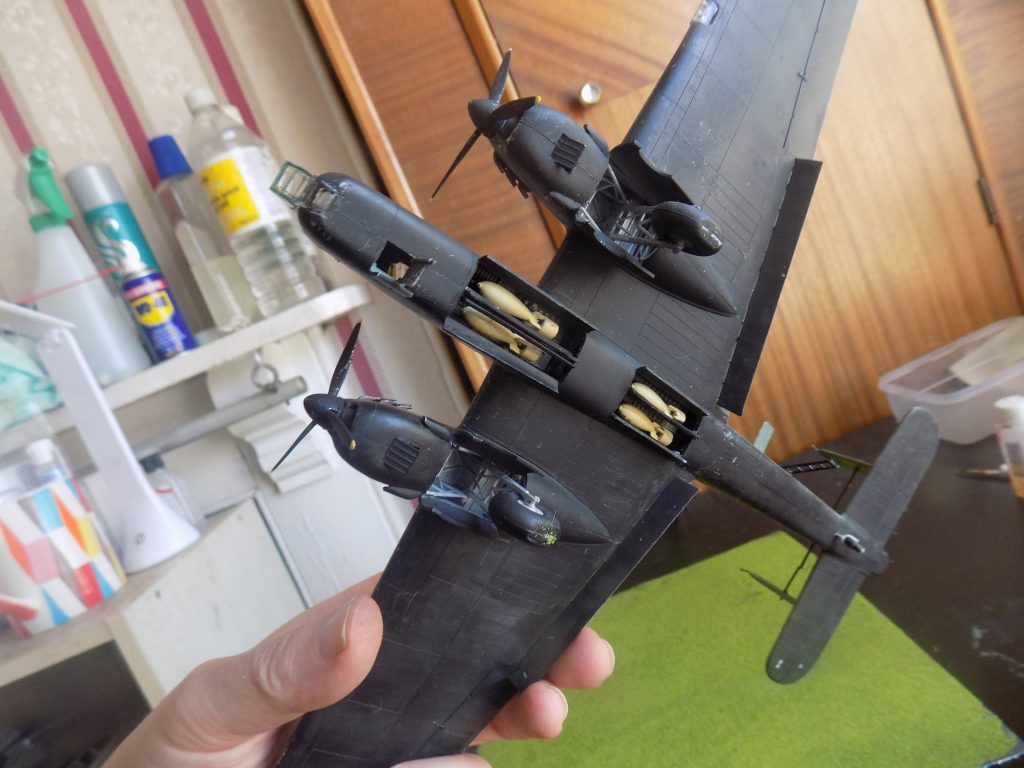
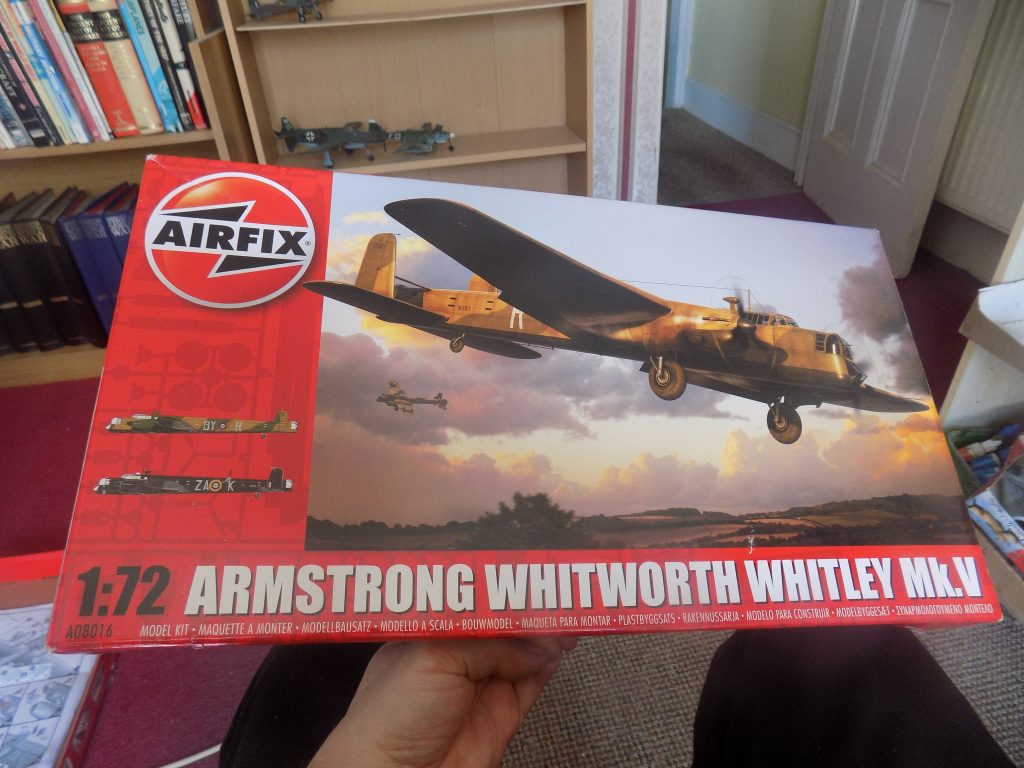
‘Bomber Command launched its first attack of the war against a land target on the night of 19 March 1940, when twenty Hampdens from 5 Group and thirty Whitleys of 4 Group attacked the German Seaplane base of Hornum, on the island of Sylt, a few miles west of the German-Danish coast.
Seven of the Whitleys came from 10 Squadron at Dishforth in Yorkshire, led by their flamboyand squadron commander, Bill Staton. The crews were full of excitement and apprehension to be carrying a live bomb load at last. There had been so many months of dreary ‘nickellin’-dropping propaganda leaflets over Germany, an exercise which they heartily agreed with Arthur Harris had done no more than ‘provide the enemy with five years free supply of lavatory paper’ (Hastings, ‘Bomber Command’ 1979).